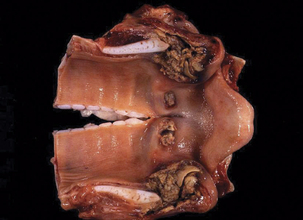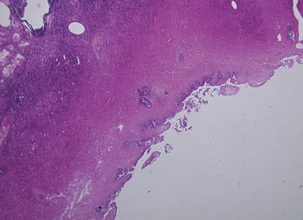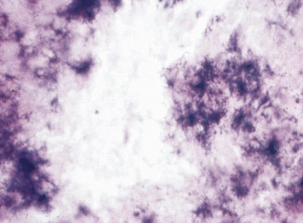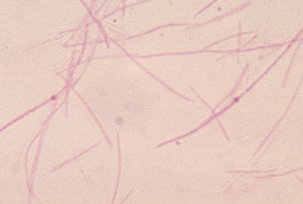Chapter 37 The Genus Fusobacterium
The genus Fusobacterium is in the class Fusobacteria, order Fusobacteriales, and family Fusobacteriaceae. The 13 current species are non–spore-forming, anaerobic, gram-negative fusiform or pointed rods, and the genus name derives from this morphotype (Figure 37-1). The major metabolic end product is butryic acid and most species have a characteristic rancid butter odor in culture.
DISEASE AND EPIDEMIOLOGY
Subspecies of F. necrophorum are the fusiform organisms most frequently isolated from veterinary specimens, where they cause a variety of necrotic infections (Table 37-1). These organisms are normal inhabitants of the intestinal tract, and are frequently encountered on other mucous membranes. The source of infection is usually endogenous. Enteric infections are not uncommon in swine, especially in conjunction with infection by Brachyspira hyodysenteriae. Hoof infection in horses is frequently called “thrush.” Necrotic stomatitis occurs in cattle, as do metritis and mastitis. Calf diphtheria (Figures 37-2 and 37-3) is a common presentation of F. necrophorum infection of the bovine mouth, larynx, and trachea, and necrotic laryngitis also occurs in feedlot cattle. It is a secondary invader in various primary ulcerative conditions in sheep, and is commonly associated with Arcanobacterium pyogenes in interdigital dermatitis and reproductive tract problems. The organism also complicates infections by fowl poxvirus.
TABLE 37-1 Fusobacteria of Veterinary Significance
| Fusobacterium Species | Associated Diseases |
|---|---|
| F. necrophorum | Bovine footrot, mastitis, metritis, liver abscesses; calf diphtheria; ovine interdigital dermatitis; “bullnose” in swine; equine thrush; avian diphtheria; necrobacillosis in rabbits; lamb septicemia; ovine, bovine abortion |
| F. equinum | Tracheal washes and pleural effusions of horses with lower respiratory tract disease, including necrotizing pneumonia and pleurisy |
| F. nucleatum | Sporadic ovine and bovine abortion; soft tissue infections of companion animals |
| F. russii and varium | Soft tissue infections in companion animals |

FIGURE 37-2 Gross lesions of Fusobacterium necrophorum infection (diphtheria) in a calf.
(Courtesy Edward G. Clarke.)

FIGURE 37-3 Diphtheritic tonsillitis, a hallmark lesion of Fusobacterium necrophorum infection (calf diphtheria).
(Courtesy Stephen Rushton.)
Other organisms of clinical significance are F. equinum, which has been isolated from tracheal washes and pleural effusions of horses with lower respiratory tract disease, including necrotizing pneumonia and pleurisy. Horses that have been recently transported are at increased risk. The name F. nucleatum ssp. canifelinum has been proposed for organisms recovered from pleuritis in dogs and cats and from cat- and dog-bite wounds in animals and humans.
The single most important disease associated with F. necrophorum infection may be bovine liver abscesses (Figure 37-4). Organisms of biotype A (F. necrophorum ssp. necrophorum) are of greatest virulence, and are most often found in bovine liver abscesses, in pure culture. Biotype B (ssp. funduliforme) is isolated from the rumen (including rumenal wall lesions). When F. necrophorum ssp. funduliforme is found in liver abscesses, it is usually in mixed culture. The uncommonly isolated biotype AB is of intermediate virulence, and biotype C strains are avirulent.

FIGURE 37-4 Large numbers of fusiform organisms in a direct smear from a bovine liver abscess.
(Courtesy Raymond E. Reed.)
Stay updated, free articles. Join our Telegram channel

Full access? Get Clinical Tree



